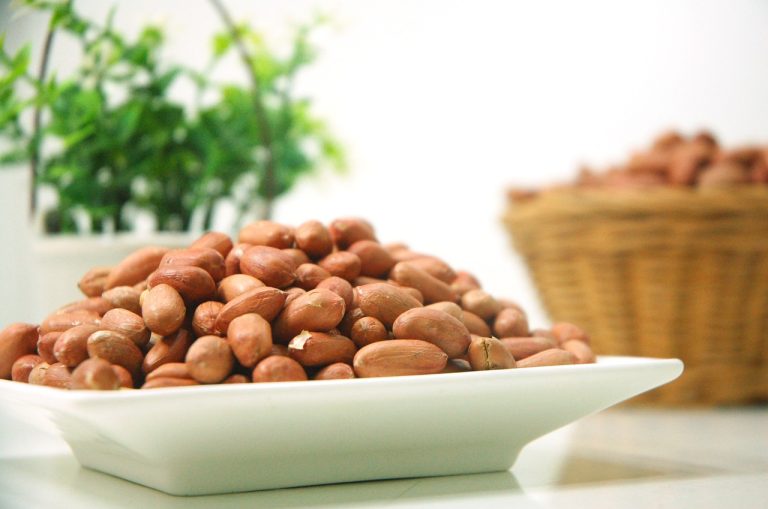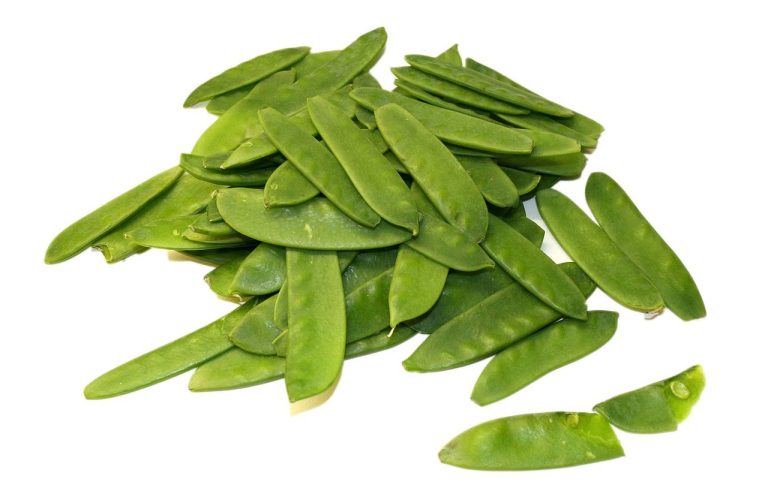Are Peas Low FODMAP? Is It a FODMAP-Friendly Legume?
Are you following a low-FODMAP diet and wondering – are peas low FODMAP? Peas are a type of legume that is a common ingredient in many dishes. However, if you are following a low FODMAP diet, you may need to be careful with your pea consumption.
The answer depends on the serving size as well as the type of peas you eat. According to Monash University, a leading authority on the low FODMAP diet, a serving size of 75 grams of peas is considered low FODMAP. However, larger serving sizes may contain higher amounts of FODMAPs and may trigger symptoms in some people.
Let us understand this in detail.
Are Peas Low FODMAP?

The answer to the question depends on the type of peas as well as the serving size. Let’s take a closer look at green peas, snow peas, and split peas.
Green Peas
Green peas are a good source of fiber, protein, and vitamins. According to Monash University, a 75-gram serving of green peas is low in FODMAPs, which means it is safe to consume during the elimination phase of the low FODMAP diet.
Here is a nutrition table for a 75-gram serving of green peas:
| Nutrient | Amount |
|---|---|
| Calories | 52 |
| Protein | 3.6 g |
| Carbohydrates | 8.8 g |
| Fiber | 3.6 g |
| Fat | 0.2 g |
In addition, here is a table for the amount of Glucose, Fructose, and Excess Fructose per serving suggestion for green peas:
| FODMAP | Amount |
|---|---|
| Glucose | 1.5 g |
| Fructose | 0.7 g |
| Excess Fructose | 0 g |
Snow Peas
Snow peas are a type of pea that is commonly used in stir-fries and salads. According to Monash University, a 75-gram serving of snow peas is low in FODMAPs, which means it is safe to consume during the elimination phase of the low FODMAP diet.
Here is a nutrition table for a 75-gram serving of snow peas:
| Nutrient | Amount |
|---|---|
| Calories | 22 |
| Protein | 1.8 g |
| Carbohydrates | 3.9 g |
| Fiber | 1.5 g |
| Fat | 0.1 g |
In addition, here is a table for the amount of Glucose, Fructose, and Excess Fructose per serving suggestion for snow peas:
| FODMAP | Amount |
|---|---|
| Glucose | 1.1 g |
| Fructose | 0.3 g |
| Excess Fructose | 0.1 g |
Split Peas
Split peas are a type of pea that is commonly used in soups and stews. According to Monash University, a 75-gram serving of split peas is high in FODMAPs, which means it is not safe to consume during the elimination phase of the low FODMAP diet.
Here is a nutrition table for a 75-gram serving of split peas:
| Nutrient | Amount |
|---|---|
| Calories | 77 |
| Protein | 5.2 g |
| Carbohydrates | 13.7 g |
| Fiber | 5.8 g |
| Fat | 0.3 g |
In addition, here is a table for the amount of Glucose, Fructose, and Excess Fructose per serving suggestion for split peas:
| FODMAP | Amount |
|---|---|
| Glucose | 0.7 g |
| Fructose | 3.7 g |
| Excess Fructose | 2.9 g |
In conclusion, green peas and snow peas are low FODMAP and safe to consume during the elimination phase of the low FODMAP diet. Split peas are high in FODMAPs and should be avoided during the elimination phase.
Alternatives to Peas in Low FODMAP Diet
Here are some low FODMAP alternatives to peas that you can enjoy.
Green Beans
Green beans are a great alternative to peas and can be used in a variety of dishes. They are low in FODMAPs and high in fiber, making them a great addition to your diet. You can steam them, roast them, or even add them to salads.
Carrots
Carrots are another low FODMAP vegetable that you can use instead of peas. They are high in fiber, vitamins, and minerals, and can be eaten raw or cooked. You can add them to soups, stews, or stir-fries, or enjoy them as a snack with some low FODMAP dip.
Bell Peppers
Bell peppers are a colorful and flavorful alternative to peas. They are low in FODMAPs and high in antioxidants, vitamins, and minerals. You can use them in salads, stir-fries, or even stuff them with low FODMAP ingredients for a delicious and healthy meal.
Zucchini
Zucchini is a versatile and low FODMAP vegetable that you can use instead of peas. It is high in fiber, vitamins, and minerals, and can be eaten raw or cooked. You can spiralize it to make low FODMAP noodles, or add it to soups, stews, or casseroles.
Squash
Squash is another low FODMAP alternative to peas that you can enjoy. It is high in fiber, vitamins, and minerals, and can be roasted, grilled, or sautéed. You can use it in soups, and stews, or even make low FODMAP fries for a tasty and healthy snack.
Also Read: Are Leeks Low FODMAP
Frequently Asked Questions
Is it safe to eat canned peas on a low FODMAP diet?
Canned peas are generally considered safe to eat on a low FODMAP diet. However, it is important to check the ingredients list to make sure that no high FODMAP ingredients have been added. Some canned peas may contain added onion or garlic, which are high in FODMAPs and should be avoided. Look for canned peas that contain only peas and water, or peas and salt.
Are dried peas allowed on a low FODMAP diet?
Dried peas are allowed on a low FODMAP diet in small amounts. A serving size of 1/4 cup (42 grams) of dried peas is considered low FODMAP. However, larger servings may contain high amounts of oligosaccharides, which are a type of FODMAP. It is important to note that some people with IBS may not tolerate dried peas well even in small amounts.
Can I eat frozen peas on a low FODMAP diet?
Yes, frozen peas are generally considered safe to eat on a low FODMAP diet. However, it is important to check the ingredients list to make sure that no high FODMAP ingredients have been added. Some frozen peas may contain added onion or garlic, which are high in FODMAPs and should be avoided. Look for frozen peas that contain only peas and water, or peas and salt.
Remember to always check the ingredients list and serving sizes when choosing peas to eat on a low FODMAP diet. It is also important to listen to your body and avoid any foods that trigger your symptoms.
Conclusion – Are Peas Low FODMAP?
Yes peas are a low FODMAP food in moderation. According to Monash University, a safe serving size of peas is 1/2 cup (75g) per meal. However, it’s important to note that some individuals with IBS may still experience symptoms even when consuming low FODMAP foods like peas.
It’s always a good idea to work with a registered dietitian or healthcare provider to determine the best dietary approach for your individual needs. They can help you identify trigger foods and develop a personalized meal plan that works for you.

Jane Porter is an architect that like many others, had her life significantly impacted by digestive problems for many year. Trying to find a solution to her digestive problem, she came across the low FODMAP diet, a scientifically-backed approach designed to alleviate symptoms associated with irritable bowel syndrome (IBS) and other digestive disorders.



